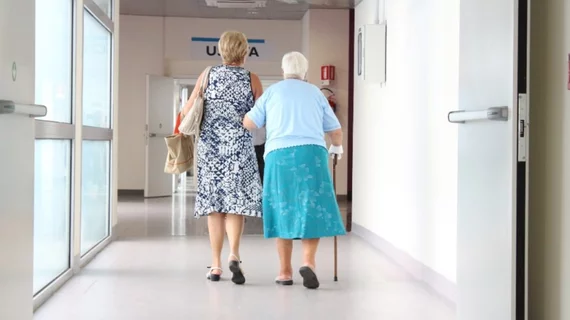Very low doses of edoxaban are safe and effective for frail, elderly AFib patients
Treating elderly atrial fibrillation (AFib) patients—even those who are traditionally ineligible for direct oral anticoagulants (DOACs)—with a very low dose of edoxaban is associated with improved outcomes, according to new research published in JAMA Network Open.[1]
“The benefits of DOAC treatment are reported to outweigh the risks associated with frailty; however, evidence for the use of DOACs in very elderly patients with AFib with frailty is lacking,” wrote first author Shintaro Akashi, MD, PhD, a cardiologist with the National Hospital Organization Hamada Medical Center in Japan, and colleagues. “Many physicians remain reluctant to prescribe standard doses of DOACs to very elderly patients with frailty because of risk factors for bleeding in this patient group, such as severe renal impairment, history of bleeding, previous falls, low body weight, and polypharmacy.”
Akashi et al. examined data from 944 patients who originally participated in the ELDERCARE-AF trial from August 2016 to November 2019. All patients were from Japan, at least 80 years old, had a history of electrocardiogram- or monitor recording-verified AFib and were ineligible for a standard regimen of oral anticoagulants. Patients were excluded from the analysis if they presented with severe mitral stenosis and/or a mechanical heart valve.
Patients were randomized at a 1:1 ratio to receive 15 mg per day of edoxaban or a placebo. In addition, their frailty was assessed based on five parameters: weight loss, grip strength, walking speed, exhaustion and activity level, with each patient receiving a frailty score of zero to five. A score of three or higher meant that a patient was considered to be frail.
Overall, edoxaban was linked to a lower risk of stroke and systemic embolism. Frailty scores did not appear to make any impact; these benefits were seen among patients who were frail as well as those who were not frail. Edoxaban was also associated with a higher incidence of clinically relevant nonmajor (CRNM) bleeding events.
Of the five frailty parameters explored in this study, grip strength and exhaustion were linked to a higher risk of adverse events. Patients with low grip strength and/or especially high levels of exhaustion, the authors noted, may benefit the most from daily 15-mg doses of edoxaban.
“Regardless of frailty status, among very elderly Japanese patients with AFib who were considered ineligible for standard anticoagulant treatment because of their high bleeding risks, very-low-dose edoxaban (15 mg) was associated with reduced incidence of stroke and systemic embolism and a higher incidence of major or CRNM bleeding than placebo,” the authors concluded. “Edoxaban may be a suitable treatment option for these patients.”

